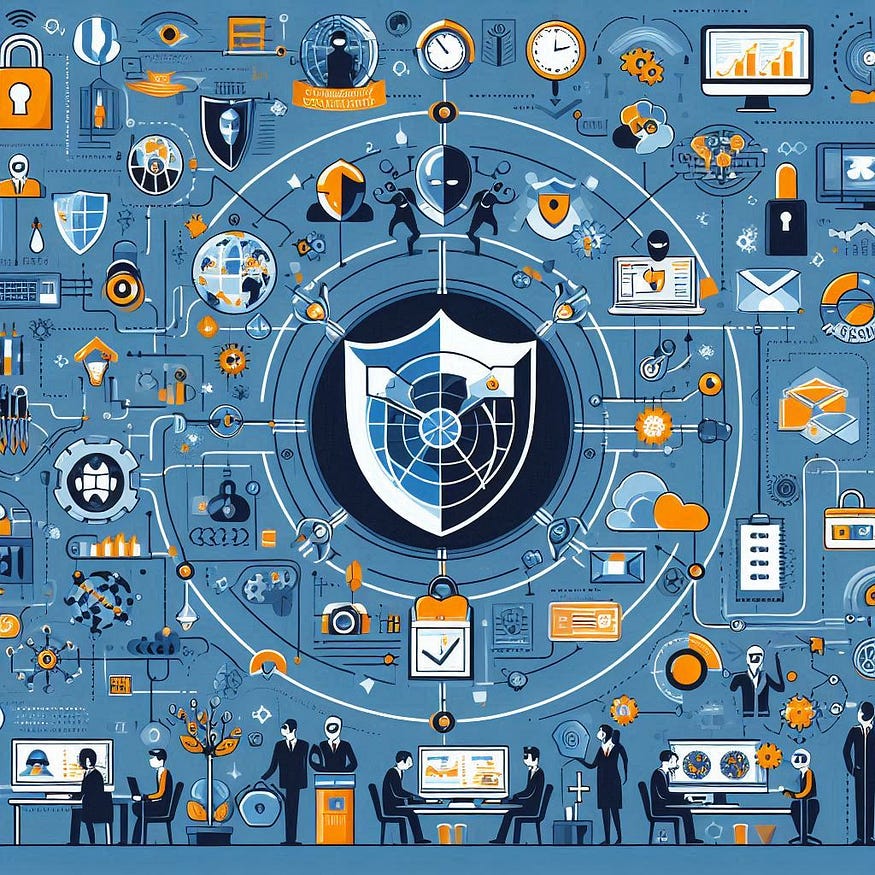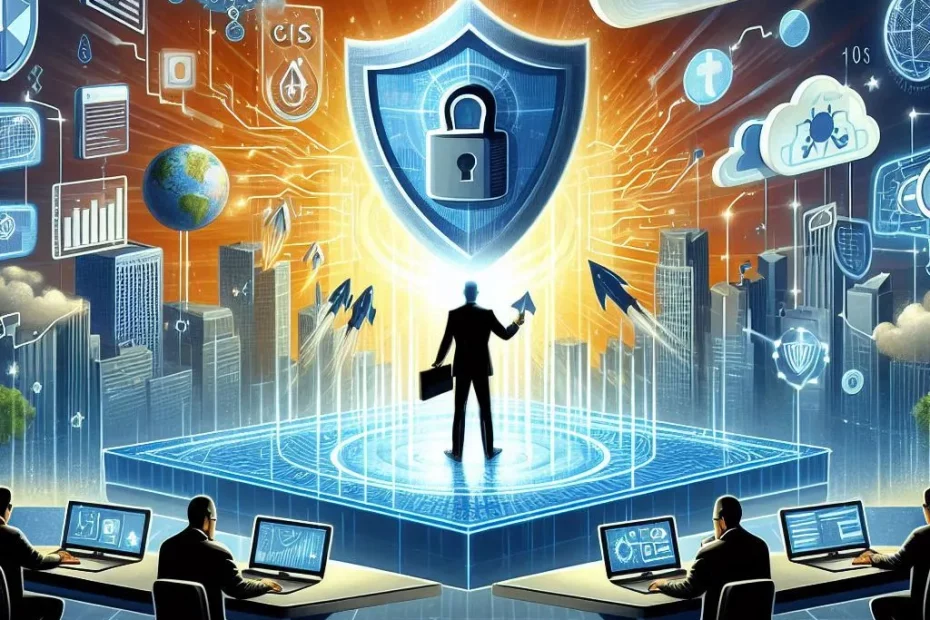A CISO’s Guide to Cyber Resilience
Meet Sarada, the Chief Information Security Officer (CISO) at FormCorp, a mid-sized tech firm in the B2B IT Sector. One day, Sarada received a frantic call from the company’s CEO. A junior employee had accidentally clicked on a phishing email, potentially exposing sensitive company data. This incident was a wake-up call for Sarada, highlighting the urgent need to foster a strong cybersecurity culture within the organization.
Sarada realized that to truly protect FormCorp, she needed to create a robust cybersecurity culture where every employee understood their role in safeguarding the company’s digital assets.
In this article, we’ll follow Sarada’s journey as she works to build and sustain a cybersecurity culture at FormCorp. We’ll explore what a cybersecurity culture entails, why it’s crucial, and provide practical strategies through Sarada’s experiences. From leadership roles to employee engagement, continuous education, and overcoming challenges, we’ll cover everything you need to know.
Understanding Cybersecurity Culture

For Sarada, cybersecurity culture meant creating an environment where security was ingrained in every action and decision. It was about making sure that every employee, from the CEO to the interns, understood their part in protecting the company’s digital assets.
Sarada knew that even the most advanced security systems could be undermined by human error. The incident with the phishing email was a perfect example. She understood that fostering a cybersecurity culture was crucial to preventing such incidents and ensuring that every employee was vigilant and proactive about security.
Statistics showed that 95% of cybersecurity breaches were due to human error. Sarada had seen firsthand how a single mistake could jeopardize the entire company. She was determined to change this by embedding cybersecurity into the fabric of TechCo’s culture.
Key Elements of Cybersecurity Culture

Leadership Commitment: Sarada began by securing a commitment from the company’s leadership. She knew that if the top executives prioritized cybersecurity, it would signal its importance to everyone. Sarada convinced the CEO to lead monthly cybersecurity briefings, making it clear that security was a top priority.
Employee Engagement: Next, Sarada focused on engaging all employees. She organized interactive workshops and gamified training sessions, making learning about security both fun and effective. Employees were encouraged to participate in cybersecurity challenges, earning rewards and recognition for their efforts.
Continuous Education: Understanding that cyber threats were constantly evolving, Sarada implemented a continuous education program. Regular phishing simulation tests and workshops on the latest threats helped keep employees informed and prepared. This ongoing training reduced successful phishing attacks by 40%.
Strategies to Build a Cybersecurity Culture

Developing Policies and Procedures: Sarada worked with her team to develop clear, accessible policies. She made sure that essential policies, like password management and data protection, were simple and easy to understand. Sarada also held sessions to explain these policies and their importance, ensuring everyone was on the same page.
Encouraging Reporting and Transparency: To foster a culture of transparency, Sarada created an anonymous reporting system for security incidents and vulnerabilities. This encouraged employees to report issues without fear of repercussions. As a result, incident reporting increased by 30%, allowing for quicker threat mitigation.
Recognizing and Rewarding Good Practices: Sarada understood the power of positive reinforcement. She launched a monthly “Security Star” award, recognizing employees who consistently followed best practices. This initiative fostered a competitive yet positive security-conscious environment, motivating everyone to be more vigilant.
Overcoming Challenges in Building a Cybersecurity Culture
Resistance to Change: Sarada encountered resistance from some employees who were skeptical about new security measures. She addressed their concerns through education and communication, holding town hall meetings to discuss new policies and explain their benefits. This open dialogue helped smooth the transition and reduce resistance.
Balancing Security and Productivity: Sarada knew that overly restrictive security measures could hamper productivity. She involved employees in the development of security protocols, ensuring they were effective yet unobtrusive. By conducting focus groups and gathering feedback, Sarah found the right balance between security and productivity.
Measuring the Success of Your Cybersecurity Culture

Metrics and KPIs: To measure the success of her initiatives, Sarada tracked key metrics such as the number of reported incidents, employee participation in training, and compliance rates. She used this data to continuously improve FormCorp’s security programs. This data-driven approach helped Sarada identify areas for improvement and celebrate successes.
Regular Audits and Assessments: Sarada conducted regular audits and assessments to evaluate the effectiveness of the cybersecurity culture. She performed bi-annual assessments, using the findings to make necessary adjustments and ensure that FormCorp’s security posture remained strong. These regular evaluations helped keep the company’s security culture dynamic and responsive to new threats.
Secure Your Organization with ParadigmIT Cybersecurity
At ParadigmIT Cybersecurity, we understand the importance of creating a robust cybersecurity culture. We offer comprehensive Vulnerability Assessment and Penetration Testing (VAPT) services to identify and mitigate potential threats. Additionally, our tailored Employee Training programs ensure that your team is equipped with the knowledge and skills to protect your organization from cyber threats.
By partnering with ParadigmIT Cybersecurity, you can embark on the process of creating a cybersecurity culture within your organization by identifying and addressing vulnerabilities before they can be exploited. We can help you foster a culture of security awareness and proactive defense to eventually enhance your organization’s overall security posture.
Don’t wait for a breach to happen. Secure your organization’s future by building a strong cybersecurity culture.
Reach out to ParadigmIT Cybersecurity today to get a quote for our VAPT and Employee Training services.
Contact email: support.cs@paradigmit.com

